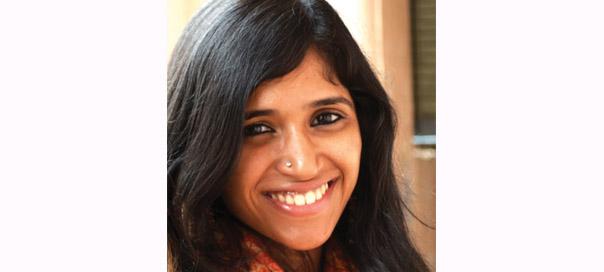By Sindhu Rajasekaran
Author, producer and screenplay writer
As I walk into the sets of Ramanujan at Cambridge, my ears expect to hear Tamil and British English only, given that it is an Indo-British film and a Tamil-English bilingual. But lo and behold, a multitude of languages bustle around me!
The cinematographer instructs the light department in Malayalam and English, to which the American lighting technician replies, “I’m gettin’ it done!” and manages to communicate the information to the light boys from Mumbai, who only speak in Hindi.
Walk over to the costume department, and there are German and Turkish extras asking their Greek makeup artist to apply more foundation, constantly breaking into a stream of jas and böyles, while the Portuguese hairstylist nudges them to get their makeup done so she can style their hair.
There is an emergent burst of Punjabi that floats in the air, must be the coach drivers, I think. The Urdu-speaking production manager stands in front of me, saying “Iayna”, offering me some sweets.
I look at my watch, just 20 minutes before the shoot starts, and I panic wondering how all these people would get the work done on time. Are they communicating the right information to one another? The British-Pakistani line producers stand in the distance, signalling that we have permission to shoot in the location only for two more hours.
The director is waiting on the set, ordering his English assistant in a burst of Tamil and English to find out where the actors are. She and the Tamil speaking ADs hasten to bring the actors to the set. The British actors, as always professional and hardworking, stand holding their scripts, practising their Tamil lines for the Tamil version. The Indian actors, also punctilious, are getting into character, practising their English dialogues for the English version.
Five minutes before the shoot starts, there is a seeming crisis. The art department has to find a way to cover a modern electrical switch, given that the film is a historical one set in the early 1900s. No furniture is high enough to cover it, they aren’t allowed to nail anything to the walls, nor can they paint over it! Suddenly, our usually silent camera assistants converse animatedly between themselves in Telugu, and run over to assist to the art department with one of the light flags. Crisis averted.
The lighting done, the set ready, the actors and extras are here. I anxiously look at my watch, expecting a 15- to 20-minute time over-run. But, no! We are on time!
The cast and crew are all waiting now, whispering to each other in their own known languages, and watching the director from the corner of their eyes for the order to begin filming. Only the ADs are running around, making last minute fixes. A dizzying feeling envelopes me as I hear all those words from all those languages. But then, once the director says “Action”, all those vowels stop in a fleeting second.
English and Tamil are the only two languages that we hear and see in the film, but it took so many languages to get that film made. And, it seems that no matter what language one speaks, it is one’s passion for film and art that matters. When the crew and cast see the same vision, that of an aesthetic film that breaks international boundaries, their own language does not pose a barrier at all.
Feedback: sindhu.rajasekaran@camphorcinema.com























